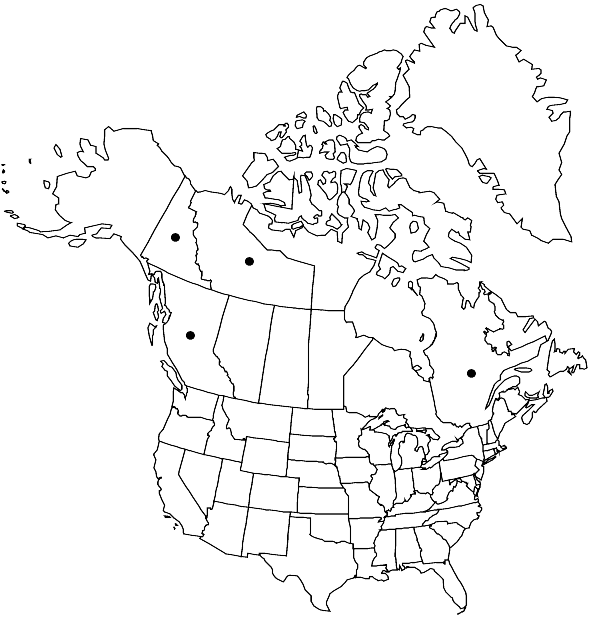Difference between revisions of "Dicranum fuscescens var. flexicaule"
Bryol. Brit., 77. 1855,.
FNA>Volume Importer |
imported>Volume Importer |
||
| Line 51: | Line 51: | ||
|publication year= | |publication year= | ||
|special status= | |special status= | ||
| − | |source xml=https:// | + | |source xml=https://bibilujan@bitbucket.org/aafc-mbb/fna-data-curation.git/src/bb6b7e3a7de7d3b7888a1ad48c7fd8f5c722d8d6/coarse_grained_fna_xml/V27/V27_585.xml |
|genus=Dicranum | |genus=Dicranum | ||
|species=Dicranum fuscescens | |species=Dicranum fuscescens | ||
Revision as of 22:34, 27 May 2020
Plants in loose tufts. Stems 8-18 cm, scarcely tomentose. Leaves strongly falcate-secund, somewhat sparse; margins nearly entire; costa almost smooth on abaxial surface; proximal laminal cells elongate, (19–)42–54(–84) × (5–)7–9(–12) µm; distal laminal cells irregularly rounded, elliptic or short-rectangular, (7–)9–19(–36) × (4–)8–9(–13) µm. Seta 2.5–3.5 cm.
Phenology: Capsules mature summer.
Habitat: Moist humus banks, humus on coniferous forest floors, and bogs on small conifers (often black spruce)
Elevation: 900-1300 m
Distribution

B.C., N.W.T., Que., Yukon, Europe.
Discussion
Variety flexicaule is an arctic-alpine taxon that needs further collecting and study to determine its taxonomic status. J. Kucyniak (in D. Löve et al. 1958) called attention to it in the Quebec bryoflora and many European bryologists recognize it as a form (W. Mönkemeyer 1927), variety (J. Podpera 1954; L. I. Savicz-Lubitzkaya and Z. N. Smirnova 1970; V. M. Melnichuk 1970), or species (E. Nyholm 1986+, fasc. 1). It is immediately noticed because of the large size of the plants, whose stems are up to 18 cm, sparsely foliated with strongly falcate-secund leaves, and the long seta, 2.5–3.5 cm. It is further recognized microscopically by the irregular shape of the distal leaf cells, the nearly entire leaf margins, and the costa almost smooth on the abaxial surface.
Selected References
None.